We buy rechargeable batteries to save money and to provide a way to power our small electronics after SHTF.
If you want to be able to count on them for the long haul, you need to provide long term care for rechargeable batteries and avoid drastically reducing their lives.
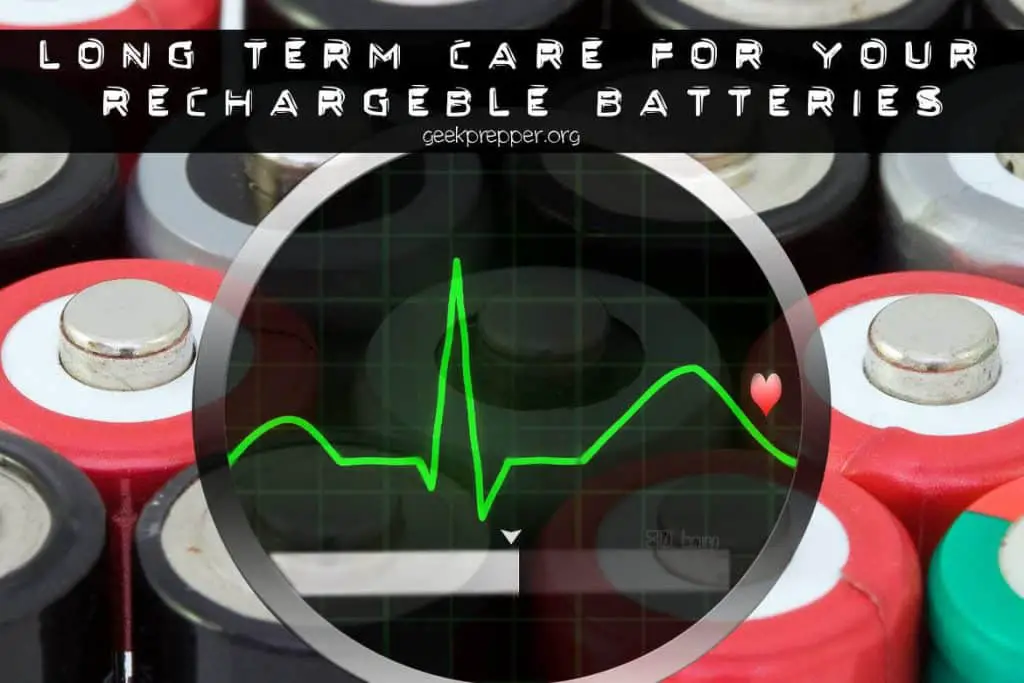
Long Term Care for Rechargeable Batteries
How you store, maintain and recharge your batteries can have drastic impact on their long term viability.
Storage
NiCd (NiCad)
- When storing NiCad batteries, be sure to pick a cool, dry place.
- The optimum temperature range for storing NiCad batteries is between −20° C and +45° C (−4° F to 113° F)
- When preparing to store NiCad batteries, be sure to discharge the batteries fairly deeply. The range in recommendations is between 40% and 0% charged when going into storage. NEVER short circuit a NiCad to drain/discharge, as this causes excessive heat and can cause hydrogen gas to be released, which can lead to an explosion. The self-discharge rate for NiCad’s is right around 10% at 20 °C, and rising up to 20% at higher temperatures.
- It is not recommended to store NiCads for an extended amount of time, without occasionally charging and using the batteries. During long periods of storage, the cadmium in the NiCd can form dendrites (thin, conductive crystals), which may bridge the gap between contacts and short out the cell. Once this happens, there is really nothing that can be done to fix it long term. The best way to prevent this from happening is frequent use (but at least once a year).
NiMh
- When storing Nimh batteries, be sure to pick a cool, dry place.
- The optimum temperature range for storing Nimh batteries is between -20° C to +35° C (−4° F to 95° F)
- Can be stored indefinitely in either a charged or uncharged state.
- Recovery may take several cycles.
- During long time storage battery deactivation may tend to occur, and for this reason charging may stop early during recharging after storage. This problem can be solved by charging and discharging the battery several times.
- If a battery is stored for a prolonged time connected to a load, electrolyte fluid will leak, the battery will begin to deteriorate, and capacity will be impaired after storage.
Types of Chargers
Sometimes when we buy rechargeable batteries, they come with an included charger. Do you know what type of charger it is? Do you know how much charging current it provides? Do you know how long you should charge your batteries?
There are 2 types of battery chargers, smart chargers and dumb chargers
Smart Charger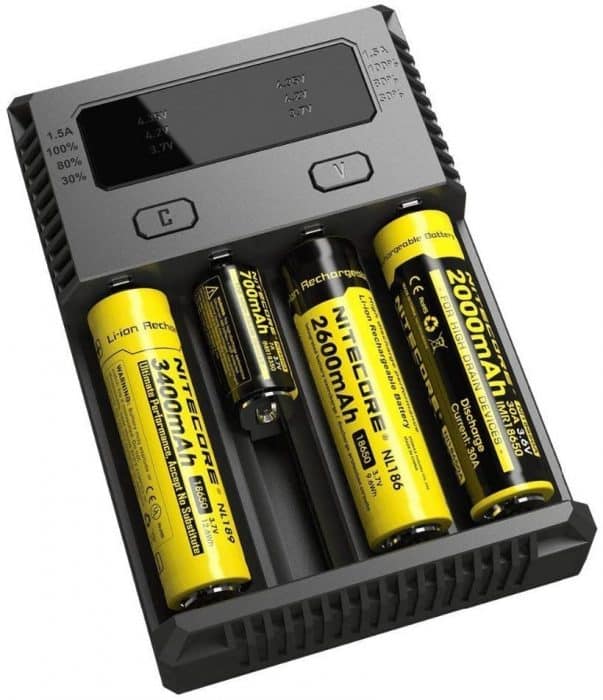
A ‘smart’ charger monitors each battery’s status individually, and stops charging when each battery is full.
This is the only way to ensure that your batteries are fully charged but not over-charged. It may also provide extra features such as Conditioning, Discharging and Testing.
Dumb Charger (aka: Basic Charger, Value Charger, etc)
A ‘dumb’ charger typically charges batteries in pairs only, and relies on a safety timer to terminate charging after 8-12 hours.
These chargers are designed to output a certain amount of power over a certain period of time.
Typically they have no charge termination mechanism and do NOT know how much voltage was in your battery when you inserted it, they do NOT condition the battery, nor do they really know when the battery is charged.
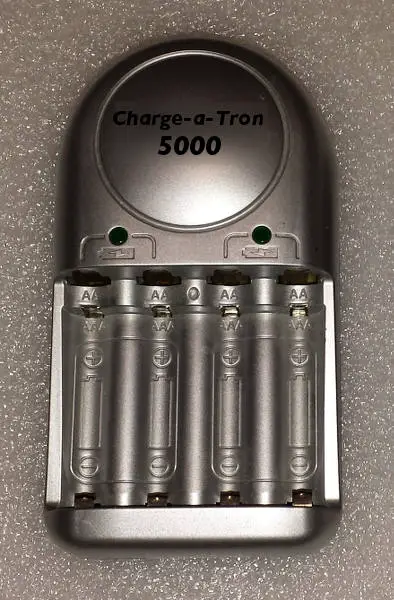
They only know to turn on the indicator light (or start flashing) after X amount of hours, its up to you do do the math to ensure that your batteries are charged and not overcharged.
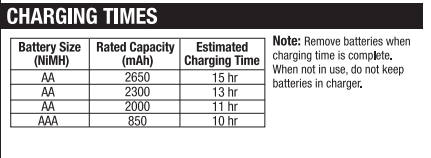
How long will it take to charge my batteries?
We can use some quick math to estimate how long it will take. Simply divide the capacity of the battery by the charge rate of the charger.
If everything was 100% efficient we could use this formula:
Charge Time (hour) = Capacity (mAh) / Current (mA)
Since nothing is 100% efficient, we compensate for that: Simply divide the capacity of the battery by the charge rate of the charger, then increase the amount of time by about 20% to allow for a certain amount of inefficiency.
[ Capacity (mAh) / Current (mA) ] x 120%
Example: a battery with a capacity of 1600 mAh will require about 9.6 hours to be fully charged by a charger with a charge rate of 200 mA. (1600 mAh/200 mA x 120%).
Incidentally, this example would apply to a standard AA NiMH battery and a typical “rapid charger”.
Keep in mind that a battery that is only partially discharged will be recharged in less time.
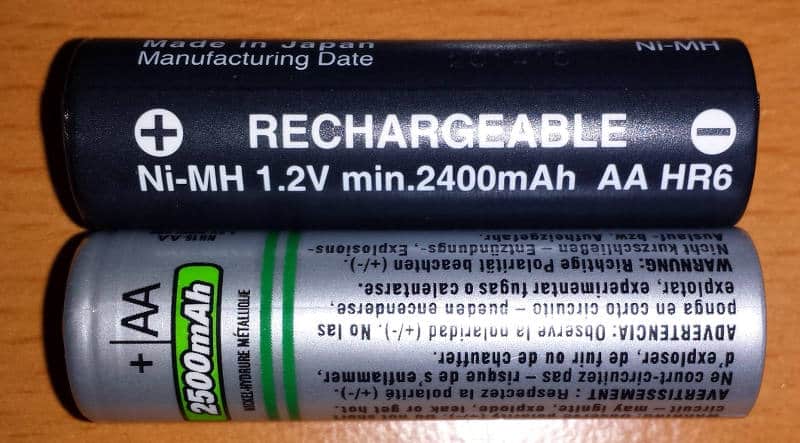
NiMH batteries can typically withstand over-charging at 0.1C current (which means 200mA for a 2000mAh cell) without immediate damage.
If you forgot and left your batteries in a charger for an extra day, they are not going to leak or explode. But in the long run, over-charging will lead to reduced capacity and shorter lifespan.
How much Charge Current is my charger providing?
You can find the charge charging current on the rear or bottom of most chargers or in the charger’s documentation
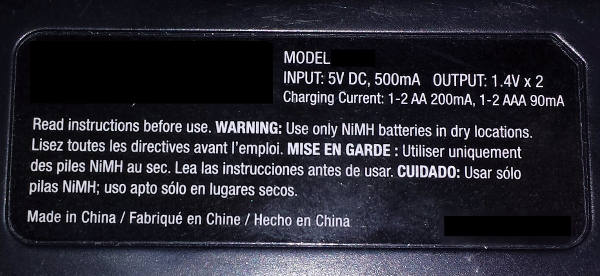

What about Rapid Chargers or Quick Chargers?
There is no standard in the industry, so manufacturers can use the terms in different ways. This means that both terms are essentially meaningless.
One of the problems with terms like these is that the amount of time it takes to charge a battery is dependent on the capacity of the battery being charged.
A charger that can charge a standard capacity AAA NiCD battery (180 mAh) in just one hour might take 8 hours to charge a high capacity NiMH (1500 mAh) battery. It’s best to ignore such terms and make a rough calculation of how fast a charger can charge batteries.
Fast charging is not good for batteries. Slower is better.
Fast charging generates heat, which degrades the battery, reduces its life and in extreme cases can ruin it.
Recommended Smart Chargers
Any smart charger is better than a non-smart charger (ok, dumb charger, I was trying to be politically correct), but there are 2 AA/AAA smart chargers that really lead the pack. Don’t worry, you can use AA batteries in your C or D-cell devices with some battery adapters.
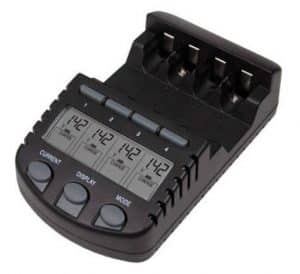
La Crosse Technology BC-700 Alpha Power Battery Charger
- Battery charger for 4 rechargeable NiMH and NiCad AA and AAA batteries; with 4 modes: Charge, Discharge, Refresh, and Test
- Individual compartment for each battery with own LCD display and mode selection for multitasking
- 3 charging rate options of 200 mA, 500 mA, and 700 mA
- Detects overheating for safety
- Operates on 100-240-volt AC input for international use
Most of the time you’ll only use Charge mode.
Stick in the batteries and select the charging current desired (200/500/700mA, etc), but there Discharge, Refresh and Test are very very handy to have.
If you believe that your batteries exhibit behavior of reduced capacity, you can run them through the Discharge/Refresh operation.
You can also use this mode to refresh your batteries once or twice a year. Don’t go crazy on this, it’s not magic, if your batteries don’t require this, it won’t make them better.
If you wish to run the La Crosse BC-700 directly off of 12v (to charge in your car or from your solar power battery bank) you’ll need the adapter: AccuPower AP12243 Car Adapter for La Crosse BC-700 BC-1000 BC-9009
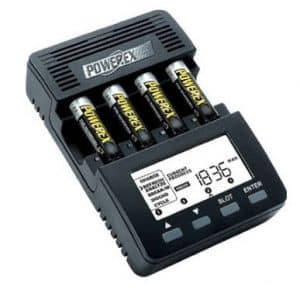
PowerEx MH-C9000 WizardOne Charger-Analyzer
- Four independent slots: It’s like having four charger-analyzers for AA and AAA NiMH/NiCD batteries
- Large backlit LCD display: Digitally displays capacity, voltage, time and current
- Endless programming possibilities – over 10,000 ways: 29 selectable charging and discharging rate. Charging current from 0.2A to 2.0A and discharging current from 0.1A to 1.0A in 0.1A increments
- Delivers just the right charge: Independent negative delta V, temperature and timer protection eliminates over and undercharging
- Super light travel worldwide power supply and 12 V compatible: Worldwide 100-240 V switching adapter – light weight and small.
- Also compatible with 12 V input. Will work on car when used with the optional cigarette lighter adapter
This charger has almost unlimited options, and can be very complex.
It’s perfect for those people who want precise control over every aspect of their battery recharging battery recharging! For most folks the BC-700 above might be enough, but if you are a super nerd, then this bad boy might be right up your alley!
Dead Cell Detection: If a cell is completely drained (when the battery terminal voltage drops below 0.5V), this charger automatically starts charging at 125mA until the voltage rises above 1V, then it continues with the programmed charging current.
The C9000 may be able to recover ancient rechargeable batteries that other chargers won’t even recognize.
If you believe that your batteries exhibit behavior of reduced capacity, you can run them through the Cycle Operation (it’s just like Discharge/Refresh operation on the BC-700 above).
You can also use this mode to refresh your batteries once or twice a year. Don’t go crazy on this, it’s not magic, if your batteries don’t require this, it won’t make them better.
Which Rechargeable Batteries should I use
That is up to you. The batteries with the best and most consistent reviews are the Sanyo Eneloop and the AmazonBasics High-Capacity Rechargeable Batteries, which are identical to the Sanyo Eneloop XX – at much lower cost (Read the Reviews about them, on Amazon, to find out more).
I bought some of the AmazonBasics High-Cap Rechargeable Batteries and after using them for a while, ordered more. I was afraid they’d get popular and the prices would rise.
The Conclusion
You want to rely on your rechargeable batteries for the long haul and some tender loving Care for Rechargeable Batteries and knowing how to store, maintain and recharge them will ensure a long cycle of use.

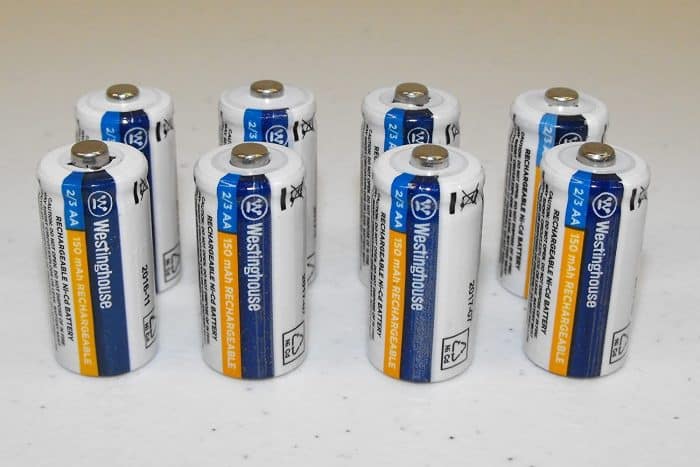
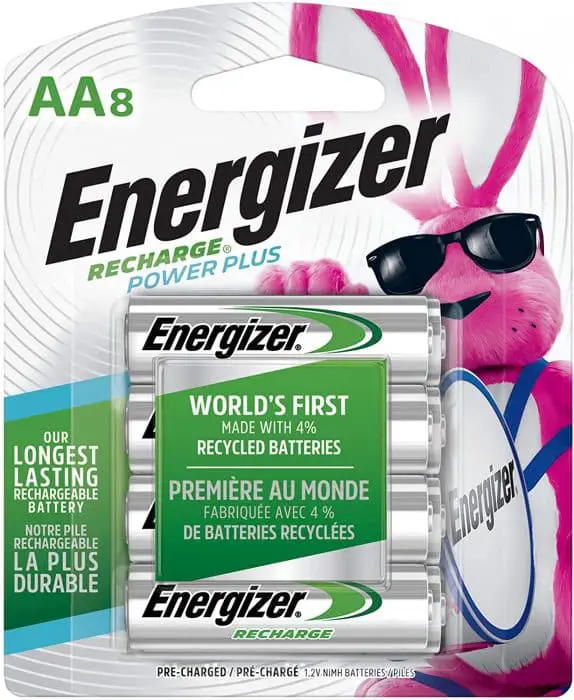
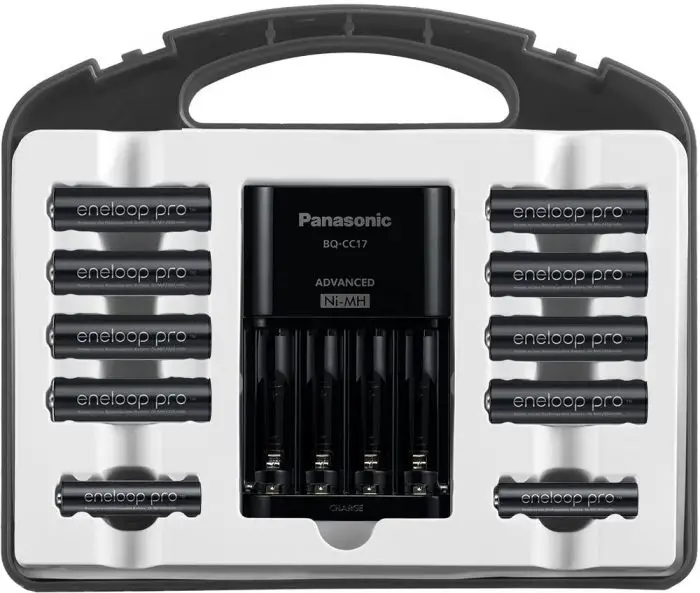

I have a LOT of NiMh batteries plus one of those “Titanium” chargers from Amazon. I hadn’t seen many with a 12V adapter aside from that.
What I’d like to find is a good 12V smart charger for 10-12k mAh D cell NiMh batteries. The AAs with a spacer I’m using now can be a bit short on life when powering something that expects a lot more capacity.
All of the DC chargers I’ve found seem to be AA/AAA only.
Check out this D-cell spacer. It uses 2 AA batteries for each D-cell. Hope that helps.
Just found your site a couple of weeks ago and really connected with your approach to being prepared. You are also one that finally convinced me to get a Baofeng UV-5R radio. I remember reading that it is best to run it’s batteries through 3 cycles of charge and depletion. Is there any other way to deplete the battery other than just turning the power on and waiting a couple of days? I’m also concerned with doing this with a Petzl headlamp that has Lithium batteries. Thanks.
@ Morghan: The Powerex C9000 uses a 12V DC input and you can purchase an optional car adapter. You can charge C and D cell batteries using an adapter such as this: https://goo.gl/PNyrj0